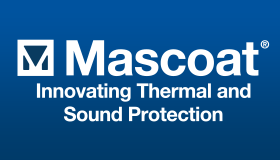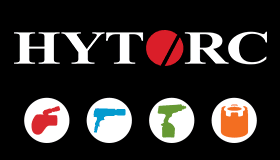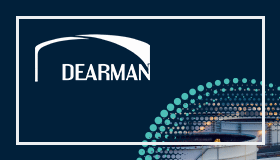Storage tanks with thief hatches that are open/leaking for 100 or more hours can emit volatile VOC emissions that exceed the 6 tons per year limit in NSPS OOOO/OOOOa (see Table 1 below). Leaking storage tank thief hatches also vent methane (CH4) to the atmosphere (for tank equipped with emission controls). Thief hatch leaks, if managed with a reactive strategy, can go undetected for many hours, and so have a large actual impact on a company’s greenhouse gas (GHG) emissions. The solution is a proactive system that prevents and detects open thief hatches in a timely manner so that corrective actions can be taken.

Example Thief Hatch Venting Scenario
Below is a thief hatch venting scenario for a facility producing oil with API gravity of 40 and a flash factor of 60 scf vent gas per barrel of oil produced. The example facility with leaking thief hatches for would emit CH4 at a rate of 100 kg/hr based on a production rate of 5215 barrels oil per day (BOPD). For a cumulative thief hatch leak duration of 100 hours the facility’s actual VOC emission from the storage tanks could exceed the 6 tons VOCs per year limitation in NSPS OOOO/OOOOa.
Below are some examples of how a proactive system can reduce CH4 emissions at O&G facilities.
Leaking Thief Hatches
A pumper/operator arrives at a tank battery and finds a thief hatch is open and is venting gas. If the tanks’ vent gas is routed to a vapor recovery unit (VRU) or to a flare or enclosed combustion device (ECD), then vent gas containing VOCs and CH4 would be vented to the atmosphere. The reason for the open thief hatch could be due to over pressuring of the tanks, worn gaskets or because the latch for the thief hatch was not closed properly.
The duration of the venting will be a function of:
- Date/time malfunction begins
- Date/time malfunction discovery
- Date/time malfunction corrective action
- A proactive system to minimize thief hatch leaks would include:
- Preventative maintenance program to routinely inspect hatch gaskets and replace as needed.
- Realtime data monitoring of thief hatches status with date/time stamps.
- Alerts to field operations of a malfunctioning/open thief hatch.
- Timely actions taken by field operations based on the alert and data supplied.
- Corrective actions by field operations to determine the root cause and stop the venting.
NOVENT™ is an innovative solution designed by Cimarron minimizing the impact of leaking thief hatches with a proactive strategy. NOVENT™ is a smart control system that detects open hatches and notifies the operator of such events. NOVENT™ can reduce the duration of these leaks by significantly reducing response time. The system uses wireless technology to alert operators in a timely manner. The sensors can detect a partially open or fully open hatch.
The data collected by NOVENT™ can be used to conduct a root cause analysis of thief hatch leaks.
Preventative Maintenance activities that can reduce leaking thief hatches is to routinely inspect and replace worn hatch gaskets. Cimarron’s field services team offers aftermarket services includes repairs, preventative maintenance, troubleshooting and refurbishing and upgrading.
NSPS OOOOa and Proposed NSPS OOOOb and Leaking Hatches
Using a system to minimize open/leaking thief hatches in storage vessels is key to ensure compliance with federal EPA regulations. Regulations in 40 CFR 60 subpart OOOOa require each thief hatch to be properly sealed and seated during normal operations and be equipped with gasket material that is suitable for the stored fluids and expected weather conditions.
Also, proposed rules in 40 CFR 60 subpart OOOOb will add a “Super-Emitter Emissions Events” as a new emission source for O&G operations. “Super-Emitter Emissions Events” are emissions of 100 kg/hr (5,213 scf/hr) or greater of CH4 that are detected by an EPA qualified third party. If an operating company is notified of a super emitter event, then a root cause analysis must be conducted by the facility. Thief hatches are required to be visually inspected to determine if open hatches are a cause of a super-emitter event.
The proposed third-party remote sensing/quantification of CH4 leaks would measure CH4 emitted from all emission sources from a facility. This could include leaks from storage tanks, compressor seals, fugitive equipment and pneumatic devices. Depending on the measurement resolution of the remote sensing, a facility’s aggregate CH4 could be detected/quantified and trigger a notification and root cause analysis by the operator. This means that a quick response and having needed data to correct leaking thief hatches can save money on actions required to respond to such leaks.
Adopting a preventive maintenance program and using a system such as NOVENT™ can avert the occurrence of super-emitter events and accelerate implementing corrective actions.
Summary and Conclusions
Oil and gas companies are facing growing pressure to reduce their greenhouse gas emissions, including carbon dioxide and methane. One source of methane emissions is leaking storage tank thief hatches. Reactive strategies have been used in the past to reduce such methane emissions, but these can result in longer durations of emissions due to malfunctions. Proactive systems, such as preventive maintenance, real-time monitoring and alerts to malfunctions are more effective ways to reduce methane emissions.
Proactive systems such as Cimarron’s NOVENT™ , alerts operators to open thief hatches and can aid in compliance with federal regulations like 40 CFR 60 subpart OOOOa and proposed subpart OOOOb. Response time for correcting leaking thief hatches is enhanced with monitoring and alerts for such events. Implementing a proactive approach can help O&G facilities avoid costly emissions events and improve their image.
For more information visit www.cimarron.com




















